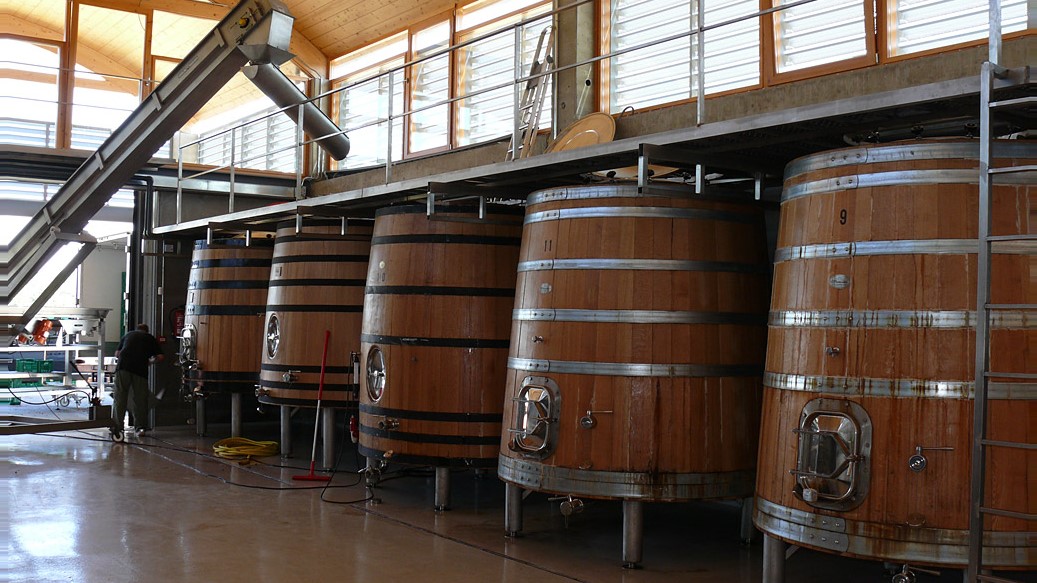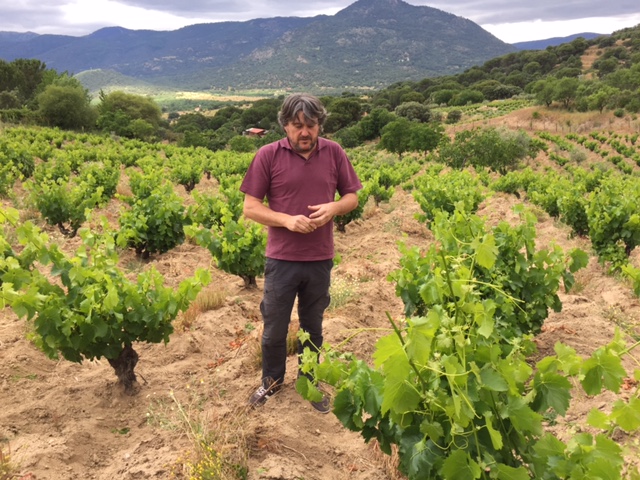
A short drive of 75 minutes or less from Spain’s capital city of Madrid lands you in one of three of the gorgeous, outer lying communes making up the Vinos de Madrid D.O. Arganda to the East, Navalcarnero to the Southwest and San Martin de Valdeiglesias to the West. While Vinos de Madrid may be a classification scarcely heard of here in the US, its wines are steadily giving the region notoriety within the country’s already rich wine history. Since 2006, the Bernabeleva estate has represented this unique terroir by unleashing the elegance offered in its raw, unfettered styles of Garnacha.
Translated to “Bear’s Forest”, Bodegas Bernabeleva received its namesake upon the discovery of the estate grounds’ Celtic-origin markings symbolizing the goddess of the hunt in the early 19th century. Purchased in 1923 by the great grandfather of the winery’s founders, Juan Diez Bulnes and Santiago Matallana Bulnes established Bodegas Bernabeleva as a legacy fulfillment to their ancestor’s grand vision of a winery. Craving a pure and unrefined expression of the land’s bounty, the brothers have accomplished a terrific milestone for the Spanish staple grape Garnacha.
The rich and varied soil content present in the viticultural area outlining Madrid remains lazily represented in the US. However, this biodynamic and organic grower is offering a refreshing departure from run-of-the-mill Garnacha in its current, all too familiar form. Hearty soils of sand and granite composition weave through the 86-acre estate, nourishing the slow-ripening Garnacha, the unctuous Albillo, and smaller plots of the noble Macabeu. Though inactive for a time, the estate’s original rootstock was planted alongside the original purchase of the property in 1923. These old vines remain alive and well today and are responsible for the truly eye-opening amount of structure seen in the final product. Good luck finding a reason not to visit.
Regarding post-harvest interaction, human interference does not play a very large role in the final product. The amounts of juice fermented by the whole-cluster is dependent on the vintage. While some years call for aging in large format oak barrels others may find more favorable results through concrete tanks. Regardless, the bulk of work for these Garnacha purists happens during the initial harvest. The wild yeasts of the land are given free roam to weave their magic without too much intervention.
This particular vintage is a classic Passetoutgrain-esque expression. Give this wine a few moments to collect itself after uncorking for plesant aromas of red mountain berries, cranberry and subtle lavender. On the palate: firm, yet pleasant tannins and generous acidity open for a finish of red berry compote. This wine falls in the medium-to-light-bodied category so it pairs very nicely with your typical Pinot Noir fare (Pork, Roasted Chicken, Stewed Beef). For an eye-opening indulgence, decant for 40 minutes to an hour. Evolution in the glass is very present here.
Perhaps it is the wine-loving citizens of Madrid to blame for our limited access to these already small production wines. This kind of quality warrants a bit of hoarding if it’s produced handily in your back yard. Given, Spain is the sixth largest consumer country of wine in the world, of course they’ve caught wind of the fabulous viticulture at the footsteps of their capital! Through this wine, we're able to enjoy and appreciate one of the the small allotment of wines permitted to leave the young D.O. of Vinos de Madrid. Somehow this gem made it to America, so yeah, we’re pretty grateful.











